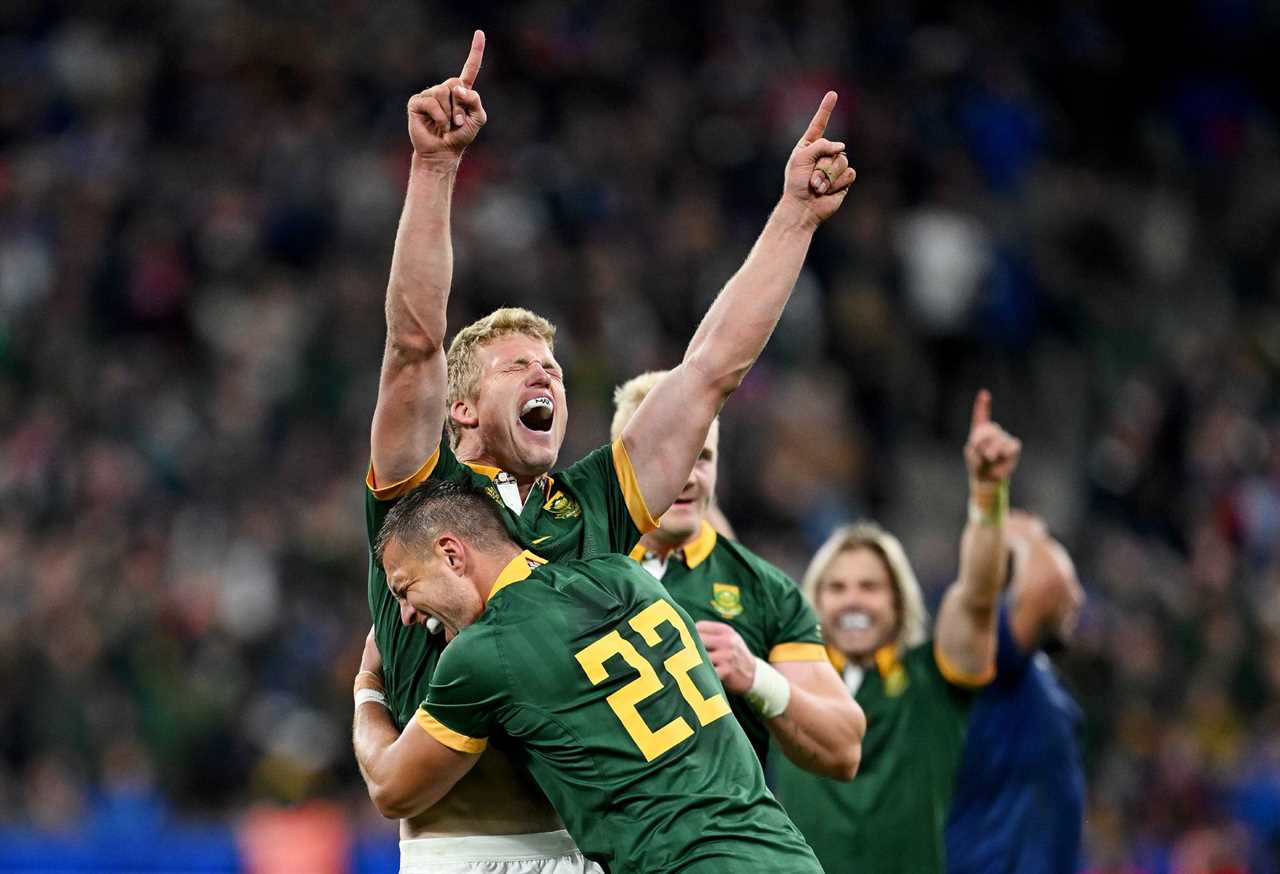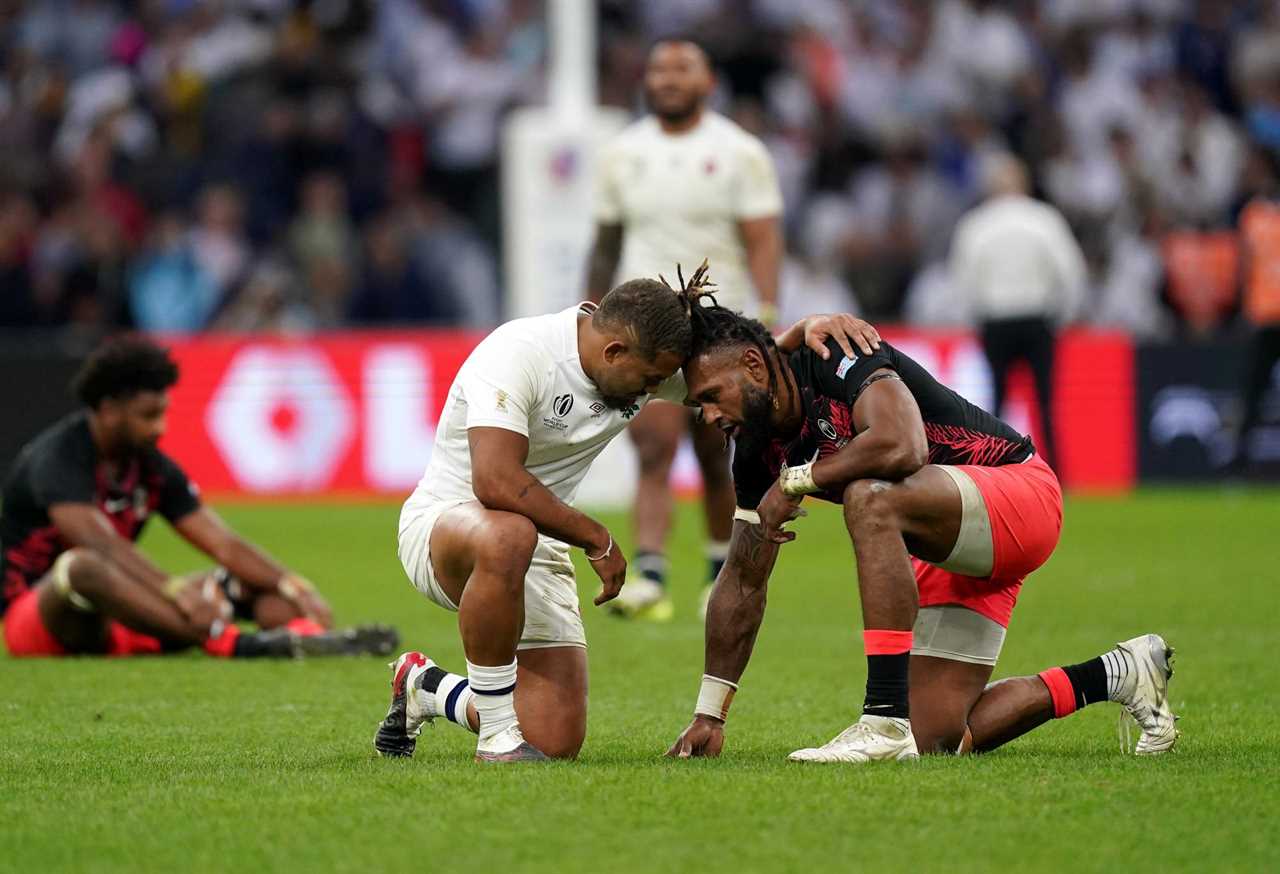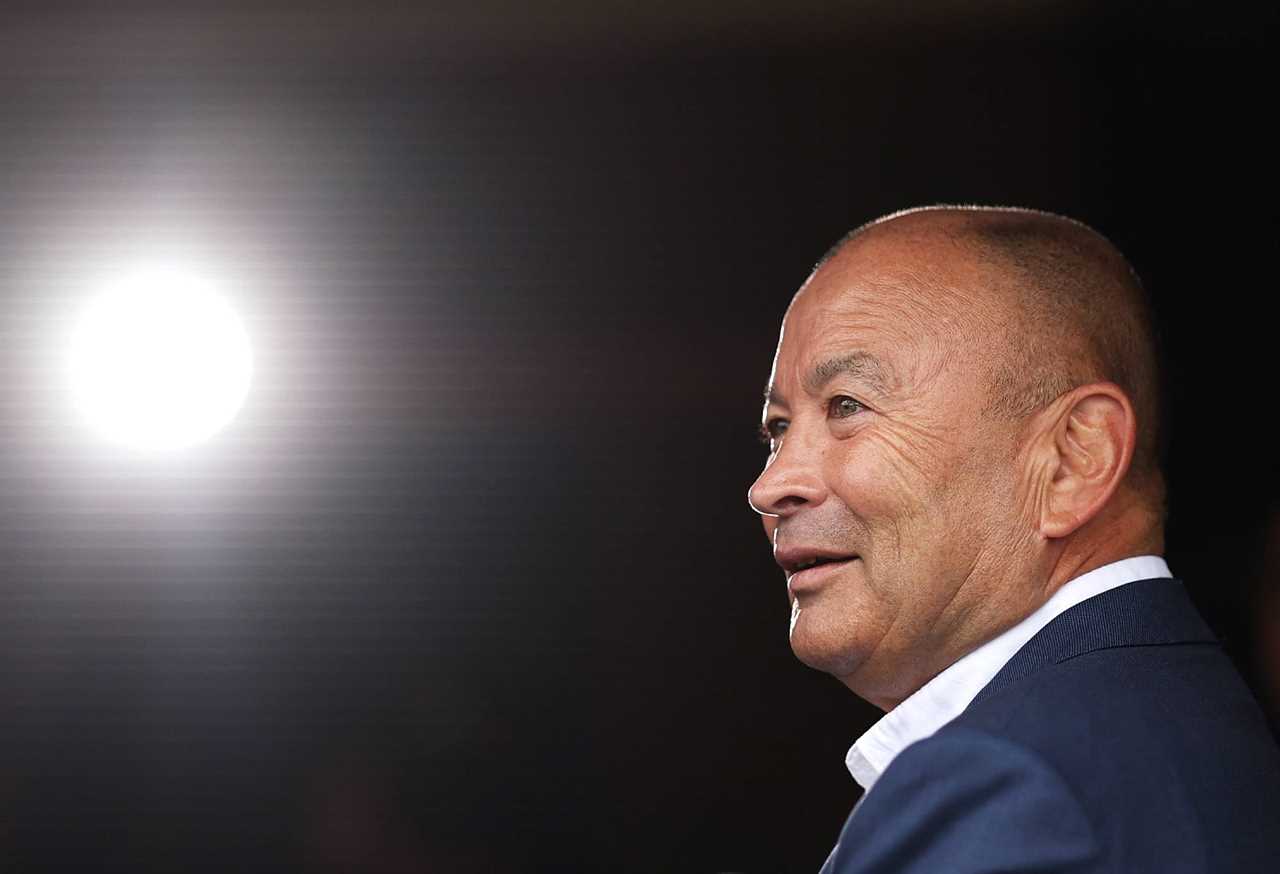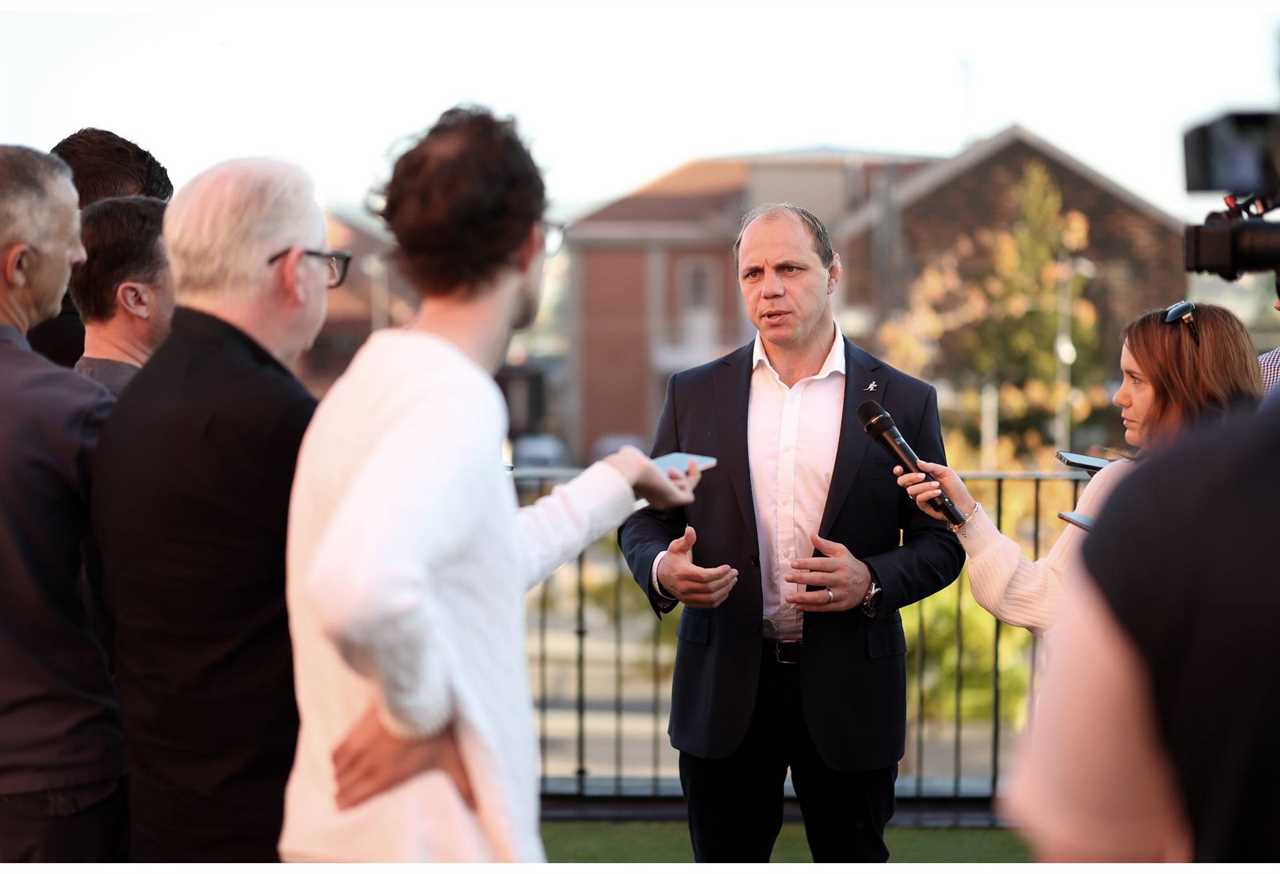PARIS – On what was roundly hailed as one of rugby’s best ever weekends, the World Cup quarter-finals were conspicuous by Australia’s absence.
Everyone knows the story; the Wallabies falling to Fiji and Wales, failing to qualify from pool C, their campaign dogged by reports and half denials of coach Eddie Jones seeking out the vacant Japan coaching role.
While that circus rolled into Coogee Oval on Tuesday, the real story – and where Australian rugby eyes should be trained – was playing out in Paris.
With rugby apparently dead/dying/on life support, somebody forgot to tell the players and the millions of fans worldwide, who marvelled at the action and revelled in the drama.
It was World Rugby’s bumbling, pitting the world’s four best sides against each other at the quarter-final stage, that inadvertently helped deliver two matches of stunning quality, on successive nights.
In doing so, it threw up two questions for Australian rugby that cut right to the heart of the anguish about the state of the game here and the confusion around what the best solution might be.

Pieter-Steph Du Toit and Handre Pollard of South Africa celebrate Quarter-Final victory over France. (Photo by Hannah Peters/Getty Images)
The first question that must be asked is; ‘does Australia want its national team to play like Ireland, New Zealand, France and South Africa did’? Not in style, because each side bought their unique tactical and skill sets to the table, but in terms of the pursuit of excellence?
Pace, power, daring and skills execution. All underscored by elite-level conditioning.
If the answer to that first question is yes, the follow up question must be; ‘does Australian rugby have it within itself to make it happen’?

All Blacks Will Jordan and Aaron Smith celebrate following New Zealand’s victory over Ireland. (Photo by Chris Hyde/Getty Images)
Because if this stark illustration of what rugby can be isn’t enough to shift the dial in Australia, then it’s hard to know what ever will.
There is also an important supplementary question which points to both the problem and the solution; ‘how many people involved in Australian rugby, be they professional players, club players, juniors, coaches, referees, administrators, and Rugby Australia board members, actually watched both Paris quarter-finals?’
If the answer is fewer than 100%, there’s the nub of the problem right there. How can Australia aspire to sufficiently improve its performance if the people playing and running the game don’t know what it is they’re aspiring to?
We’ll never know, but I’m willing to wager that the number is well below that figure. That would not only speak to a disconnect and lack of understanding of what professional rugby really is, but also go a long way to explaining why so many people are hellbent on some kind of domestic solution. It’s cosier and it doesn’t involve continually exposing our failings on the world stage.

England’s Ollie Lawrence consoles Fiji’s Waisea Nayacalevu after England’s quarter-final win. (Photo by Mike Egerton/PA Images via Getty Images)
Except it does. And how do we know this is true? Because exactly the same thing happened at last year’s Women’s World Cup, and will continue to happen into the future.
Australia’s Wallaroos toiled honestly and earnestly but operated at a level far below Canada, England, France and New Zealand, who produced semi-finals and a final full of skill, daring and high drama.
Australia’s response in the 12 months since? No substantive change, other than to frustrate the Wallaroos into going public with their concerns about slipping even further behind.
It seems like every man and his dog has a solution, or part solution for Australian rugby, but what is missing is the mechanism to tie everything together. A framework and trigger to ensure that the best options are suitably canvassed and worked over, a working plan devised that is joined-up and fully integrated, and the right people appointed to deliver it.
In the short term, what must happen is for the situation surrounding Jones to be put to bed, one way or the other. It is inconceivable that the task to repair and restore Australian rugby can proceed in such an overheated, distracting environment.
To that end, Australia is temporarily hostage to Japan Rugby, while they take their sweet time to decide on their next coach. Should Jones be appointed and depart Australia, that would surely flush his sponsor, Hamish McLennan, out of the chairman’s seat, and clear the decks for (another) fresh start.
Should Jones not be appointed, everyone can go about pretending that he was never a candidate for the job in the first place, and Jones put to the side to go about assembling a credible coaching team and begin restoring respect to the Wallabies’ brand.

Wallabies head coach Eddie Jones. (Photo by Mark Metcalfe/Getty Images)
What can’t happen is for the restoration process to be at the whim of a chairman who has not at any point in his tenure exhibited the depth of understanding, patience or humility to facilitate an operation that would have the appropriate terms of reference, independence and rigour.
Nor has the chairman exhibited the personality or management style required to unite people behind him. It can be safely assumed that when it comes to Australian rugby, anyone who wants everyone else to believe they are the smartest person in the game, almost certainly is not.
It is understood some very high-level names were approached to lead the review into Australia’s World Cup failure but declined to do so.
That’s as clear an illustration of a lack of faith in Rugby Australia’s administration as it is possible to get.
It is also believed that, in a play to keep his position, McLennan has offered to hand more autonomy to CEO Phil Waugh and step back into a more traditional, non-executive chairman role.
Make sure of your place in the stands to see the British and Irish Lions in 2025. Tour packages on sale now at Wallabies Travel
Whether that is ‘too little, too late’ remains to be seen, but however the position is arrived at, the restoration of Australian rugby is most certainly a process that must be owned by Waugh, as CEO.
As much as fans are despairing, it is not as if Australian rugby is starting from total rubble and needs a complete rebuild. There are smart, hard-working rugby brains already scattered around key administrative and rugby positions, nationally and within the franchises. There are other engaged, deep thinkers outside of the system.
The process of centralisation is already underway. The club competitions in Sydney and Brisbane in particular, enjoy solid support and have years of history underpinning them. The upcoming Lions tour and two home World Cups offer an opportunity to push rugby into the forefront of mainstream consciousness.

Rugby Australia CEO Phil Waugh speaks to the media in France. (Photo by Chris Hyde/Getty Images)
The appointment of a national high-performance director is imminent, but it is important that this isn’t seen as a catchall solution. Rather, it is merely one piece of what is a complex puzzle.
In my view, once this person is in place, Waugh should commission a gathering of the best of Australian rugby’s IP, and lock them in a room until a detailed framework for the restoration and ongoing operation of Australian rugby – at all levels – is agreed upon.
Not a touchy-feely, Kevin Rudd-style, Canberra talkfest, but a proper, meat and potatoes, warts and all summit, with real, actionable outcomes.
It should comprise people who understand the economic, financial, geographic and governance imperatives that overlay Australian rugby, but whose thinking isn’t constrained by them.
It should comprise people from all areas of Australian rugby, who intimately understand their particular piece of it, but not to the extent of having no goal other than to protect it.
It should comprise people who understand what the differences are between community and high-performance rugby, and where the necessary intersections are.
It should comprise innovative people able to identify and tap into new revenue streams for Australian rugby, but not at the expense of disenfranchising rugby’s core supporters.
It should comprise people who understand the changes in Australia’s demographics and culture, how these impact upon Australia’s rugby demographics and culture, and how it informs the shaping of Australia’s junior participation, talent identification and rugby pathways.
It should comprise people who are united in their commitment to securing the long-term future of the sport in Australia, and restoring the Wallabies and Wallaroos to the top echelon of rugby nations.
It should comprise thinkers, listeners and doers, not people who believe that the loudest voice is the best voice.
It should comprise people who remember where Australian rugby has come from, and who want to recapture its identity, but who also understand how professionalism and rugby’s geopolitics have indelibly changed the sport and Australia’s position in it.
And, at the end of it all, there must emerge an individual with the leadership and communication skills to capably and willingly drive change; to break things down into discrete, logical and manageable pieces, and to work tirelessly as the front-face for the sport.
As things stand today, that person can only be Waugh, as CEO.
As it stands, the national coach at war with the only major daily news outlet in Australia to cover rugby, is symptomatic of the deep hole Australian rugby sits in right now.
Meanwhile, Australia’s only national daily newspaper, The Australian, sits in a weird, juxtaposed place where on one hand it denies rugby’s competitions standard coverage, but runs a broader, at times vindictive, campaign as punishment for Rugby Australia spurning Fox Sports’ TV broadcast partnership. All the while providing McLennan and Jones a friendly platform for them to project their own agendas.
Australian rugby, like any sport, has no god-given entitlement to positive media coverage. But changing the ‘death spiral’ narrative is an essential component of the restoration process.
A good place to start would be to ensure that everyone who participates in rugby in Australia understands what happened in Paris last weekend, knows that this is what rugby can and should look like, and is motivated to play their part in ensuring that Australian rugby remains healthy, competitive and fun to be part of.
https://www.theroar.com.au/2023/10/19/sizzling-world-cup-quarter-finals-showed-australia-the-level-to-aspire-to-and-the-burning-questions-they-must-answer/
 Backyard GrillingWeekend WarriorsAdvice from DadBeard GroomingTV Shows for Guys4x4 Off-Road CarsMens FashionSports NewsAncient Archeology World NewsPrivacy PolicyTerms And Conditions
Backyard GrillingWeekend WarriorsAdvice from DadBeard GroomingTV Shows for Guys4x4 Off-Road CarsMens FashionSports NewsAncient Archeology World NewsPrivacy PolicyTerms And Conditions
